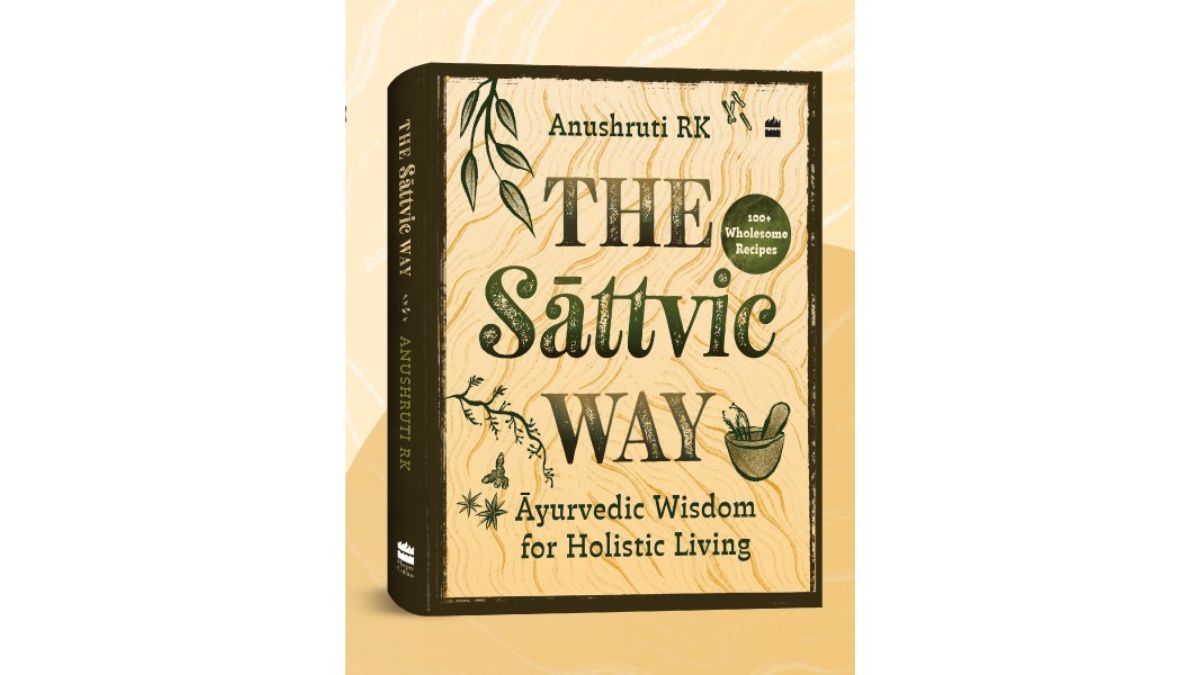'The Sattvic Way' book review: Where aesthetic Ayurveda meets modern hurdles

Ayurveda has a strange reputation. Followers swear by it, while critics dismiss it. There seems to be no middle ground whatsoever.
So when I started reading ‘The Sattvic Way: Ayurvedic Wisdom for Holistic Living’ by sattvic food expert Anushruti R.K. (published by HarperCollins), I decided to take it with a generous pinch of salt.
What works:
In under 300 pages, Anushruti—who’s also a writer—introduces you to many complex and not-so-complex Ayurvedic principles: the Gunas, Doshas, Prakriti, et al. Not only that, there are interesting questionnaires to help people understand their elements, based on physique, weight, hair, skin texture, and other characteristics.
Taking it further, she introduces you to several (sattvic) food recipes: from the simple khichdi and dal, to a quinoa tabbouleh salad and the Kerala-style vegetable biryani.
The book also features striking food pictures—the ones that would surely remind you of the old-school cookbooks that would definitely feature on our mother’s and grandmother’s bookshelves.
A book’s layout can at times make or break it. Here, it enhances the readability 100 per cent.
Interesting fonts, tables, caricatures, and questionnaires all work in perfect tandem to enhance its readability. All in all, the book is visually very impressive.
The rough edges
Having said that, the book can often read dense, with numerous Ayurvedic principles making it difficult to keep up. While the book promotes a balanced approach to life, it appears to portray the gruelling requirements of modern life out of context. For example, the sattvic way promotes having freshly-prepared meals, which can be difficult for working professionals, who often have to do meal preparation the previous day to keep their nutrition in check.
In another section, Anushruti quotes the Bhagavad Gita while introducing sattvic, rajasic, and tamasic foods.
“Food cooked more than three hours before being eaten, which is tasteless, stale, putrid, decomposed, and unclean, is food liked by people in the mode of ignorance,” she says in a section titled 'Bhagavad Gita As It Is: Chapter 17 Text 10'.
This can read uncomfortable due to the context that food in India is deeply influenced by caste hierarchy, due to which tamasic foods—considered to be unclean food eaten by the ignorant—are often associated with food eaten by the Dalit: not because due to dietary preferences, but due to their social construct.
Worth the read?
Anushruti’s ‘The Sattvic Way: Ayurvedic Wisdom for Holistic Living’ can be an interesting, almost meditative read for those seeking to understand Ayurvedic principles. If one wanted to go old-school, the many recipes it features can make the book worth read.
Otherwise, there are plenty of health and wellness websites and Instagram pages that’ll do the trick without requiring you to spend money.
Books Review